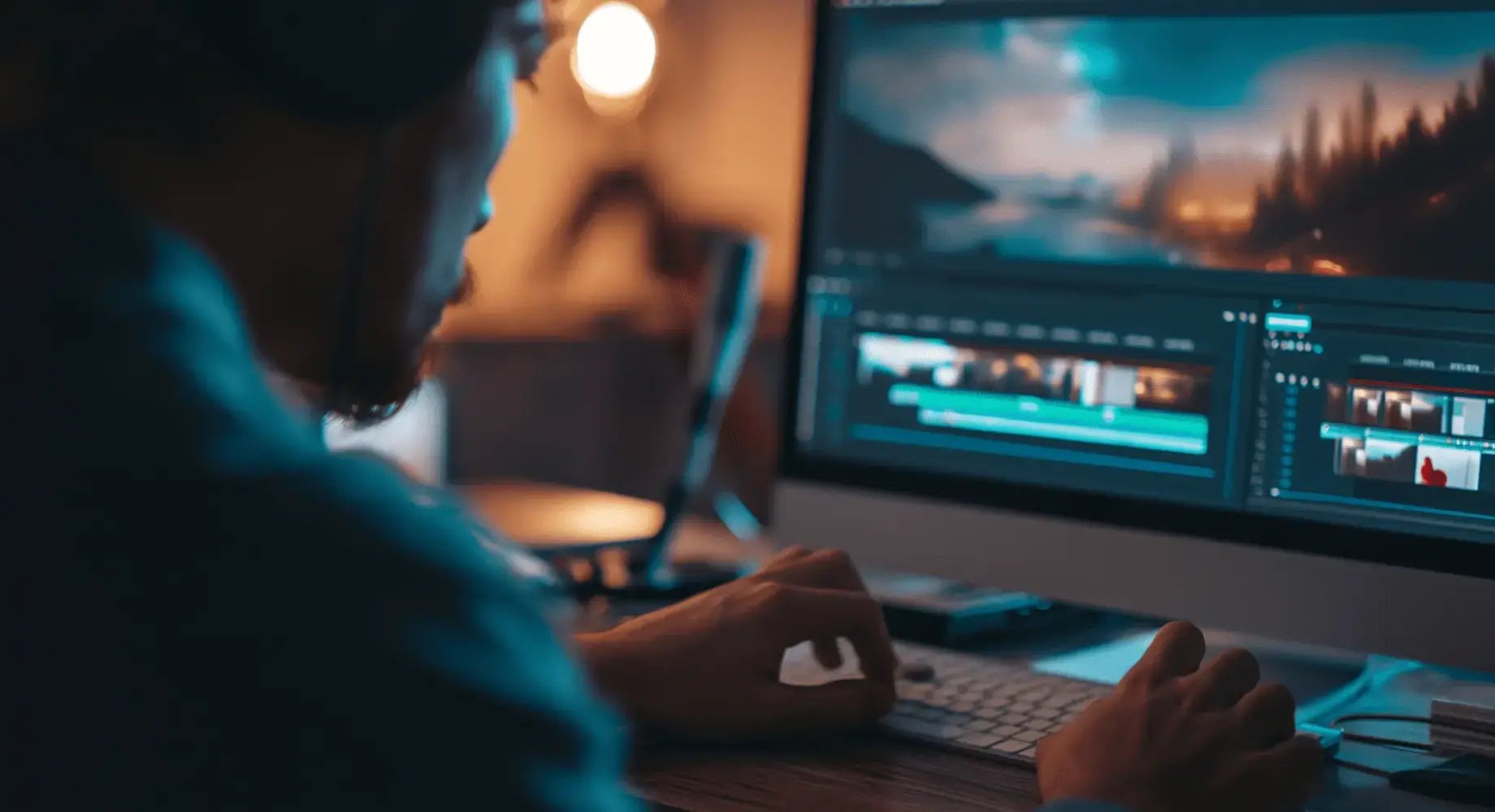
Get Video Editing Tips, Tricks, and Guides Straight to Your Inbox
Dark
Light
Whether you’re about to embark on your first-ever video project or start production on your 295th vlog, proper planning is the best way to make the end result better and the process painless (or at least much less painful).While many people have clacked billions of words on their keyboards on the best ways to plan a video project, today’s blog is about the simplest tool you can use to think ahead on your work: questions.
Questions move your brain forward in ways that statements do not. When you’re hungry, if you only think the statement “I am hungry” on a loop, it will never bring you closer to your tasty solution, but if you ask yourself the question “What could I have to eat?” you are instantly inspired by the countless possibilities. Questions move your mind towards your goals.
This guide will gift you with a handful of essential questions to ask yourself to get you ready to shape compelling video content.
Every video, whether a feature or short film, documentary, TikTok or vlog, always tells a story. That story is the structure that informs what you make. Obviously, not all videos need elaborate Hollywood plotlines. However, having clarity around the narrative, even in abstract or plotless projects, will give your video intention and coherence. Is your Instagram reel a simple set-up and punchline? Is your vlog following an entire day or a multi-week trip? Where does it begin? Where does it end? Why should your audience care?
Consider your narrative's structure, characters (whether real or fictional), and its overall underlying message. Craft a storyline that resonates with your intended audience, whether it's a dramatic arc or a simple, relatable scenario.
Remember, effective storytelling is not just about what happens; it's about how it happens and why.

Even music videos have beginnings, middles, and ends. Photo by Kyle Loftus from Pexels.
Identifying your audience informs your content's tone, style, and even ultimately the platform to share it on. Tailor your video for its intended viewers, ensuring it resonates and engages effectively.
Really put yourself in the shoes of those you create this content for. What video length, pace, vocabulary, and complexity level is appropriate? What cultural references and shared understandings can you leverage? Will they be watching it on their phone, laptop or TV? Understanding the viewers' context will allow you to craft content that speaks directly to their desires, pain points, and values.
For example, an explainer video tutorial for teenagers getting started on YouTube needs a very different creative style than a sizzling showreel targeted at NYC talent agents. Consider generation, geography, gender identity, language fluency, education level, mobility needs...the list can be endless. That’s not to say your video must be exclusively for that singular audience grouping, but just considering the key demographic will give you better clarity when planning/writing your scripts.
Anyone who's ever seen an episode of Bluey knows that while it is 100% designed and made for children, its universal style has made it a favourite for many people of many ages.
Anyone who has never seen it, I now have an excuse to share this masterpiece of a show with you.
Of course, if this is a personal project, maybe you are the sole intended audience! In that case, what version of yourself would most enjoy watching this video - today, next year, or in a decade? Even solo projects should have an intended viewer in mind to guide your creative choices.
So before your camera rolls, get crystal clear on exactly who you speak to. This clarity will refine all downstream creative decisions in the production process.
The impact of your video lies in the thoughts and feelings it evokes. Do you want to inform, entertain, or inspire? A clear goal ensures your video is focused and delivers its intended message, even if the message is ‘LOLOL man fall over.’ Conciseness is key – trim the unnecessary, keeping only what drives your point home.
As the video's creator, you have the power to influence your viewers' perspectives, emotions directly, and potentially even behaviours after watching your content. Approach your video with intention, wielding your creative influence to spark positive transformations.
Get very specific - do you want them chuckling at an ironic situation? Feeling seen about a common frustration? Re-evaluating deep-rooted assumptions? Motivated to donate or volunteer?
 An editor sits at his desk crafting his masterpiece.
An editor sits at his desk crafting his masterpiece.
With your objectives clearly defined, you can evaluate whether each creative choice constructively serves that goal. As scenes and sequences come together, analyse if the desired sentiment comes across.
Be ruthless in cutting content that muddles your intended impact, even if you worked hard to create it! Editing is key to sharpening your video’s ability to speak to your viewers’ minds and hearts insightfully.
Lean into the versatility of the visual aspect of video as a medium when planning your project. Unless you have a specific creative purpose for monotonous footage, take advantage of the many tools at your disposal - pans, zooms, tracking dolly shots, slow motion, timelapses, superimpositions, split screens...the options are endless!
Using the answers to the previous questions, you can think about what emotion you want to evoke and for whom. Then mindmap some inventive ways to bring that to life visually. Could you leverage contrasting extremes - light and dark, near and far, macro and wide shots? How might camera movement or perspective shifts mirror your characters’ inner turmoils? Never be afraid to film the same idea in different ways to find what works later in the edit.
Casey Neistat is a fantastic example of using a variety of new ways to establish a point (plus, this video is rather inspirational in itself!)
Conjure the scene in your mind, then challenge yourself to portray it uniquely. Watch a variety of films and videos on similar subject matter for inspiration. Embrace accidents and improvisation as well - some of the most striking footage happens spontaneously.
Remember this is an audio/visual medium. Sound is a powerful storytelling tool on its own, but combined with your visuals, it elevates everything to a higher plain. Use music, ambient sounds, or even silence to enhance the mood of your scene. Always be intentional with your choices – they should complement and elevate the visual narrative; sometimes, less is more.
Step back and analyse the overall essence you want a scene to radiate - warmth? Discomfort? Calmness? FUN!? Then brainstorm inventive ways to evoke that quality tonally, and search for different words on your music streaming platform of choice or even YouTube.
Listen below to see how three simple elements of the jazz music, café ambience, and rain sounds conjure a very specific mood.
How might crisp, ASMR sound effects contrast with discordant music to convey unease? Could faint, ethereal notes droney underscores stir wonder? Experiment with unique, unexpected combinations.
Consider how various audio elements interact for reinforcement or ironic juxtaposition. Play with the audio effects, and EQ adjustments to sculpt the perfect tonal blend that subtly manipulates emotions.
The possibilities for audio are endless and allowing yourself full access to that aspect of your video will get you to stand out.
Filmmaking is a collaborative medium; while it is certainly possible to get everything done on your own, it will significantly reduce time/energy to get others involved with your process.
Involve friends, family, colleagues, or even university students to help in font and behind the scenes. Post on social media groups asking if anyone has access to useful locations - empty warehouses, ranch land, subway tunnels, etc. Attract passionate volunteers by sharing your vision.
And these people don’t even have to be alive or someone you’ve met. Use Google, this blog, our online forum, and YouTube for advice. They are all still made by people!
We’ve all fallen into the trap of having this idea in our heads and riding the high like you’ve already finished the project. To butcher a quote from one of my personal heroes John Green "Everyone has ideas, but the key difference lies in the people who actually see them through."
Set deadlines for everything. They can always be changed later, but at least you have something to work on. Create a realistic schedule, considering the availability of your cast and crew. A well-thought-out plan provides clarity and direction, making the production process smoother and less overwhelming.
Before locking your production timeline, thoroughly assess the scope of what you aim to achieve. Catalog required gear, locations, cast, crew, shoots, contingencies, and post-production for a wider holistic perspective. Identify complex scenes and schedule accordingly more shoot days or backup plans.
Preparing this comprehensively upfront requires some effort but saves exponentially more work down the line trying to coordinate complex schedules and unknown variables. Everyone involved will be grateful for the clarity, direction, and thoughtfulness. People will be willing to flexibly problem-solve production hiccups if they see you've invested immense care into making their jobs easier.
Plans will always change, but having something to change in the first place will make things move forward far easier.
While having a tightly scripted vision is helpful, you should always build in wiggle room for that spur-of-the-moment magic. Invite actors to riff on written dialogue if inspired at the moment, or move organically in the space in ways that feel right. If you have a detailed shooting schedule, give yourself time for extended improv takes or experimental set-ups. Remaining receptive to off-the-cuff ideas leads to wonderfully unpredictable gems that can transcend your original vision.
Just look at how master comedy director Adam McKay made Don't Look Up.
This goes double for post-production editing. Don't lock into any preconceived sequencing or cuts too rigidly. First, watch all raw footage with fresh eyes before making any permanent edits. Scour for standout moments missed in-production. See what improv lines sparkle and unlock new directions.
Explore far-out juxtapositions across shots you’d never have scripted, or wacky transitions that convey unique auditory or visual metaphors. Import the footage into flexible editing software like Lightworks with an open heart, then let your intuition guide startling creative combinations impossible to imagine earlier. Allow yourself to pursue wildtangent inspirations without self-judgement however initially bizarre - you can always reel them back later.
By wholeheartedly embracing unplanned possibilities throughout your entire creative process, you enable magic far beyond what your limited conscious mind could conceive alone!
Celebrate every accomplishment, big or small. Recognise the effort and passion that went into your project. Whether it's a quiet moment of satisfaction or a party with your cast and crew, acknowledging your achievement fuels your journey forward.
The journey from initial inspiration to final exported video is monumental, no matter the runtime or distribution. Honour each phase completion, and the overall production wrap, as profoundly significant milestones worthy of commemoration. Even a simple 2 minute video requires conception, scripts, gear wrangling, production coordination, performance alchemy, editing finesse and more.
Give yourself a little treat after completing each gruelling leg - enjoy dinner after wrapping principle photography, or relax with a movie night when editing is finally complete. If you had a cast and crew, show tangible appreciation by hosting a screening or lively wrap party. Ensure you let everyone know their contributions mattered.
Most importantly...let yourself feel proud. From here, what once seemed impossible is now conceivable. You kept going when it got tough and actually made something! That’s more than most! And the next, even more epic creative dream awaits...whenever you're ready to pursue it with the wisdom gained from celebrating this monumental milestone!
The thorough self-examination and strategic planning outlined in these 9 questions will pay dividends throughout your production journey. Taking the time upfront to clarify your vision and intentions will provide a reliable compass if challenges arise or you lose confidence mid-project. Revisit your responses to reconnect to your North Star when feeling overwhelmed.
Of course, even the best-laid plans must become flexible both on set and in the editing bay. That’s why Lightworks editing software meets you wherever you are in the creative process to help manifest your wildest visions.
Intuitive and responsive tools equip you to organise hours of footage, finesse nuanced edits, enhance audio, apply effects, export files precisely tailored to your output needs, and more. Download for free right now to have a go.
For deeper dives into editing techniques and Lightworks tutorials, visit Lightworks Resources. Enhance your skills, discover community insights, and bring your creative visions to life.
Transform your video editing journey with Lightworks. Whether crafting a short film, a documentary, or a personal vlog, Lightworks gives you the tools to tell your story your way. Download now and embark on your path to becoming a master storyteller.